Atriplex semibaccata, Australian Saltbush
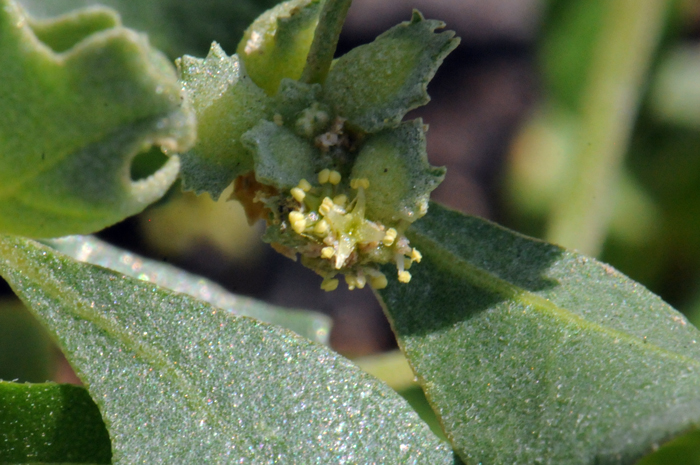
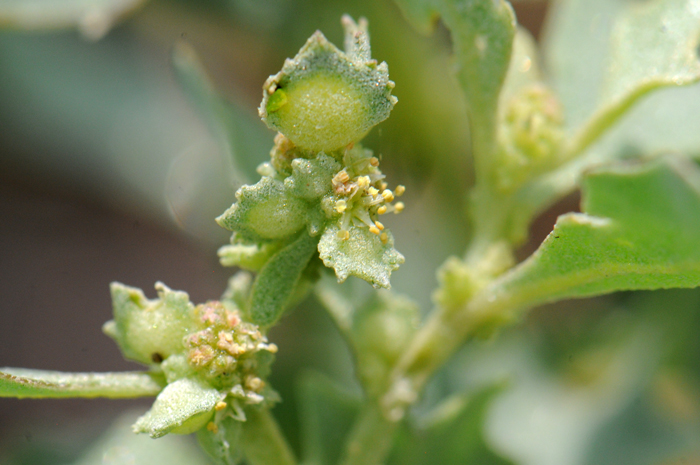
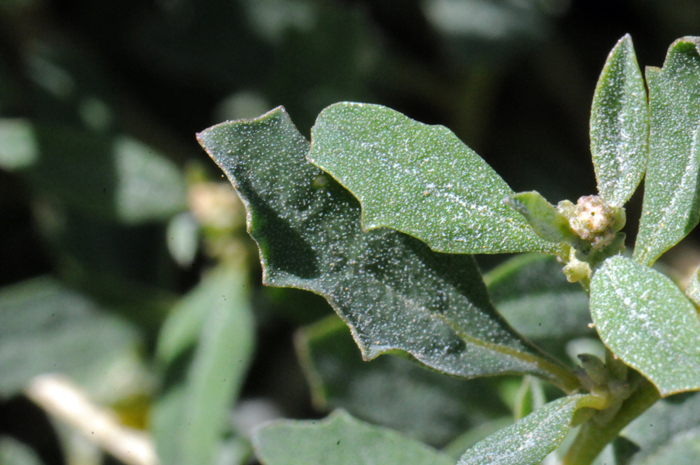
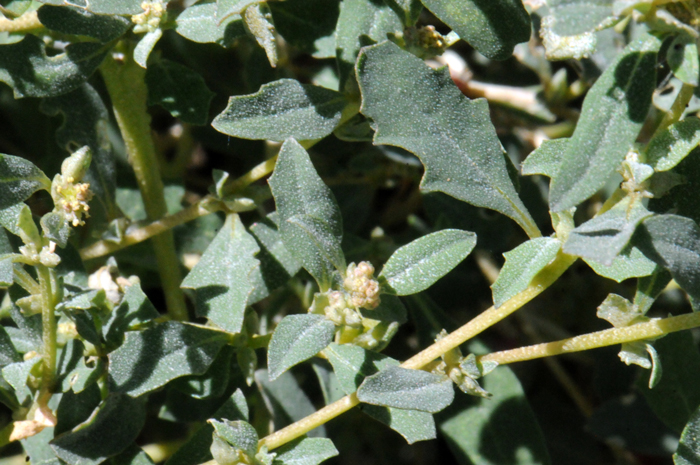
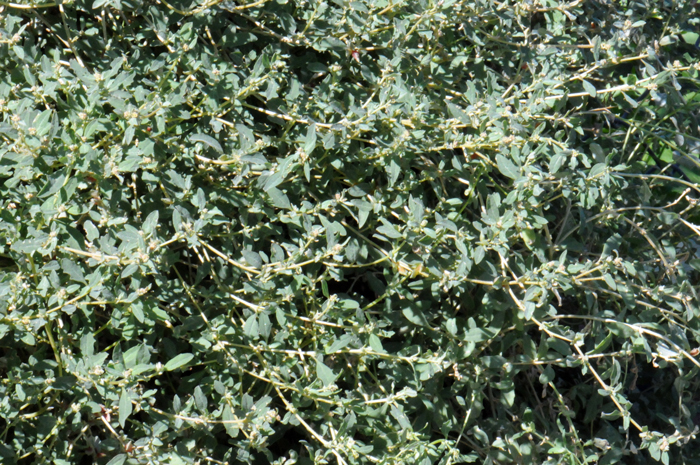
Scientific Name: Atriplex semibaccata
Common Name: Australian Saltbush
Also Called: Creeping Saltbush, Berry Saltbush
Family: Chenopodiaceae, Goosefoot Family (now as sub-family Chenopodioideae in the Amaranthaceae Family).
Synonyms: (Atriplex flagellaris)
Status: Introduced from south Australia.
Duration: Perennial
Size: 1 to to 10 feet (.30 to 3 m)
Growth Form: Sub-shrub; trailing plants with slender spreading branches; spreading or decumbent to ascending or prostrate, mat-like; without spines; new branches white-scurfy.
Leaves: Gray-greenish, leaves many; alternate; short stems (petiole) or sub-sessile; leaf blades with single vein; leaf shape oblong or spatulate to oblanceolate or narrowly elliptical; margins entire or wavy-dentate.
Flower Color: Cream to light green; male and female flowers axillary; (monecious), male flowers in small, terminal fruiting-bractlets; female flowers solitary or in small clusters; fruit fleshy-thickened and bright red and succulent at maturity; seeds small, shiny smooth, yellow or dark-brown to black.
Flowering Season: April to December. Flowers year-round in Australia.
Elevation: sea level to 3,200 feet (0 to 1,000 m)
Habitat Preferences: Saline soil, waste or disturbed areas, along roads and sidewalks, marches, several plant communities including woodlands.
Recorded Range: In North America Atriplex semibaccata is a plant introduced from Australia and now found in the southwestern United States in AZ, CA, NV, NM, TX and UT.
North America & US County Distribution Map for Atriplex semibaccata.
U.S. Weed Information: In North America Atriplex semibaccata can be weedy or invasive according to the following authoritative sources:
California Invasive Plant Council. 2006. California Invasive Plant Inventory. Cal-IPC Publication 2006-02 (1 February 2007).
Plants included here may become weedy or invasive.
Wetland Indicator: In North America Atriplex semibaccata has the following wetland designations:
Arid West, FAC;
Atlantic and Gulf Coastal Plains, FAC;
Great Plains, FAC; Western Mountains, Valleys, and Coast FACW.
FAC = Facultative, occur in wetlands and non-wetlands
FACW = Facultative Wetland, usually occur in wetlands, but may occur in non-wetlands
Invasive/Noxious Weed Information: No information available.
Threatened/Endangered Information: No information available.
In the Southwestern United States: Arizona has 25 species of Atriplex, California has 51 species, Nevada has 27 species, New Mexico has 21 species, Texas has 21 species, Utah has 35 species. All data is approximate and subject to taxonomic changes.
Comments: According to The Flora of Arizona, this introduced species help stabilize soil along irrigation ditches, crowd out undesirable weeds and provide forage for domestic animals especially sheep. Australian Saltbush has red-fleshy fruiting bracteoles which help identify this introduced species.
In Southwest Desert Flora also see: Desertholly, Atriplex hymenelytra, Four-wing Salt Bush, Atriplex canescens, Griffiths Saltbush, Atriplex torreyi var. griffithsii, Quailbush, Atriplex lentiformis and Wheelscale Saltbush, Atriplex elegans.
See complete listing of ethno-botanical uses at Native American Ethnobotany, University of Michigan, Dearborn.

